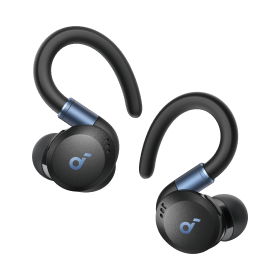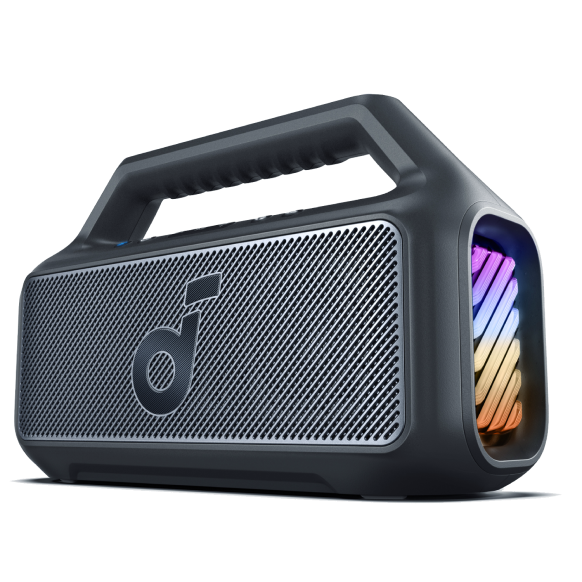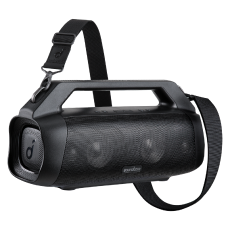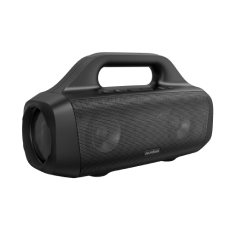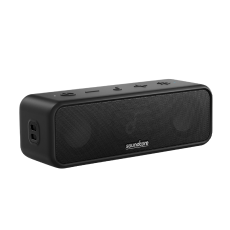Open-Ear vs. In-Ear vs. Over-Ear Headphones: A Close Look
Choosing the right headphones might seem as simple as picking a style you like, but there's so much more beneath the surface. These audio devices have evolved dramatically over the years, catering to a wide range of user preferences. From the intimacy of in-ear earbuds to the rich soundscapes of over-ear models and the revolutionary open-ear designs, each type offers a unique listening experience.
Understanding the differences can feel overwhelming. That's where we step in! In this comprehensive guide, we'll unpack these three popular styles, comparing the advantages and drawbacks of over-ear vs open-ear vs in-ear headphones to help you find your perfect audio companion.
What Are Open-Ear Headphones?
Open-ear headphones are a revolutionary approach to personal audio. Rather than encapsulating or fitting snugly inside the ear like traditional headphones, open-ear headphones are designed to allow users to simultaneously hear their surroundings while enjoying audio content. This is achieved in two primary ways: air conduction and bone conduction.
Open-Ear Air-Conduction Headphones: These utilize a unique design where the headphone speakers are positioned either slightly in front of or just above the ear canal without obstructing it. This positioning allows ambient sounds to naturally mix with the audio from the headphones.
Bone-Conduction Headphones: A significant subset of open-ear headphones, bone-conduction headphones work by transmitting sound through vibrations directly onto the listener's cheekbones. These vibrations then bypass the outer and middle ear, directly stimulating the inner ear (cochlea). This design leaves the ear canal completely open, heightening the user's awareness of ambient noises.
Open-Ear Headphones Pros

Safety and Awareness: The most significant advantage of open-ear headphones is their ability to maintain the user's connection with their environment. This feature is vital for safety in outdoor activities like running or biking, where remaining alert to nearby traffic or other potential hazards is crucial. It also aids in social situations, allowing wearers to participate in conversations and be aware of important audio cues like train station or airport announcements without removing their headphones.
Comfort: Traditional in-ear or over-ear headphones can create pressure points, discomfort, or excessive heat around the ears during extended use. Open-ear headphones, conversely, avoid direct contact with the ear canal or covering the ears entirely, minimizing issues like sweat buildup, ear pressure, and general discomfort associated with prolonged wearing.
Hygiene & Ear Health: Open-ear headphones have a clear edge when it comes to ear health, especially when comparing models based on bone conduction vs in-ear headphones. Unlike traditional in-ear designs that penetrate the ear canal, potentially trapping moisture and bacteria, open-ear headphones rest outside the ear canal. This design not only minimizes the chances of infections from bacterial accumulation but also aligns with the ear's natural process for circulating earwax, ensuring optimal ear hygiene.
If these benefits resonate with you, explore our cutting-edge Aerofit series in open-ear air-conduction headphones. For those passionate about sports, the soundcore Aerofit Pro stands out with its air-like open-ear comfort, robust bass from 16.2mm drivers, IPX5 water resistance, and a marathon 14 hours of playtime that can be extended to 46 hours with its charging case. Moreover, a quick 10-minute charge offers 5.5 hours of audio joy.

Alternatively, for those seeking comfort and value in their daily routines, the more affordable soundcore Aerofit is your match. It guarantees ultra-light open-ear comfort, balanced audio via titanium-coated domes, and ensures clear calls with its 4 mics and AI algorithm. It's armed with an IPX7 waterproof rating and gives you 11 hours of uninterrupted play, extending to 42 hours with its case. Dive into immersive audio without breaking the bank.
Open-Ear Headphones Cons
Reduced Sound Isolation: One of the inherent qualities of open-ear headphones is their lack of complete sound isolation. This can be a disadvantage in noisy environments where external sounds might overpower the audio content.
Potential Sound Leakage: With the ear canal unobstructed, there's a higher chance of sound leakage at higher volumes. This might not just concern the wearer but also disturb those nearby, especially in quiet environments.
Compromised Audio Fidelity: While many open-ear headphones aim to provide a full-spectrum audio experience, they often lack the bass response of their in-ear or over-ear counterparts. Bone-conduction headphones, especially, may struggle with delivering deep, resonating bass due to their reliance on vibration transmission.
What Are In-Ear Headphones?
In-ear headphones, commonly referred to as earbuds, are compact audio devices designed to fit directly inside the ear canal. They offer a snug fit and often come with a range of ear tip sizes to cater to different ear shapes. Due to their close positioning to the eardrum, they provide a more intimate and immersive audio experience.

In-Ear Headphones Pros
Sound Isolation: One of the most significant advantages of in-ear headphones is their ability to block out external noise. By fitting snugly inside the ear canal, they create a seal that can greatly reduce ambient sound, allowing for focused listening even in noisy environments.
High Sound Quality: Many high-end in-ear models are lauded for their superior sound clarity and enhanced bass response. They excel at delivering crisp highs and lows, a clear win in the open-air headphones vs in-ear audio performance debate.
Portability: In-ear headphones, with their compact design, slip easily into pockets or tiny pouches. This easy-to-carry nature often makes those constantly on the move prefer these earbuds vs over-ear headphones that can be bulkier or cumbersome.
In-Ear Headphones Cons
Potential for Ear Fatigue: Since in-ear headphones place the audio source very close to the eardrum, prolonged exposure, especially at high volumes, can lead to ear fatigue. This closeness can intensify the impact of loud sounds, which could pose a risk of potential hearing damage over time.
Maintenance and Hygiene: In-ear headphones require regular cleaning as they can accumulate earwax and other debris, affecting sound quality and hygiene. If not cleaned properly and regularly, in-ear headphones can become a breeding ground for bacteria, increasing the risk of ear infections.
Fit and Comfort Issues: While many models offer various ear tips, finding the perfect fit can be challenging, and a poor fit can lead to discomfort or reduced sound quality. Some people may also find the sensation of having earbuds inside the ear canal to be intrusive or bothersome over extended periods.
What Are Over-the-Ear Headphones?
Over-the-ear headphones are designed with large ear cups that fully encompass or "circle" the ears. They typically offer padded ear cushions and adjustable headbands for increased comfort. Renowned for their superior sound quality, these headphones are preferred in studio settings and by audiophiles for home listening.

Over-Ear Headphones Pros
Superior Sound Quality: When competing for the sound quality of over-ear vs. in-ear headphones or open-ear options, over-ear headphones have a clear cut due to their larger drivers, capable of producing a wide range of frequencies, from deep bass to clear, crisp highs. They also provide a broader soundstage, giving listeners a sense of spatial awareness and directionality in the audio, especially appreciated by audiophiles and in genres like classical music or live recordings.
Comfort for Prolonged Use: When comparing in-ear vs over-ear headphones regarding comfort, over-ear models have a slight edge. Their large ear cups and cushioning distribute pressure evenly around the ears, making them more suitable for extended listening sessions. Many models offer adjustable headbands, ensuring a secure and personalized fit for various head sizes and shapes.
Good Noise Isolation: Their design inherently provides passive noise isolation, and many models also feature Active Noise Cancelation (ANC) technology, which electronically counteracts external noise, creating a quieter backdrop to enjoy music, podcasts, or silence.
Over-the-Ear Headphones Cons
Size & Portability: These headphones are bulkier and less portable than in-ear or open-ear models, often requiring dedicated carrying cases. Given their size and weight, they are not ideal for activities like running or gym workouts.
Heat and Sweat: Although they might have an edge in the in-ear vs over-ear headphones health concerns debate, being less prone to ear infections, their sizable ear cups can cause heat buildup, leading to sweaty ears or discomfort during prolonged listening or in hot environments.
Cost: Quality over-ear headphones, especially those with advanced features like active noise cancelation or high-resolution sound capabilities, can be considerably more expensive than other types.
If you like the classic style of over-ear headphones but find them too bulky, on-ear headphones might be a great fit. They feature a similar design but with smaller, lighter ear pads that rest on your ears. For an in-depth comparison, check out our guide on over-ear vs on-ear headphones.
FAQ
Bone conduction vs in ear headphones: which is better?
Choosing between bone conduction and in-ear headphones depends on personal preference and usage needs. In-ear headphones offer better sound quality and noise isolation, making them great for immersive listening experiences. On the other hand, bone-conduction headphones provide situational awareness and are often more comfortable as they don't sit in the ear canal, making them a better choice for outdoor activities or prolonged wearing.
Are in ear headphones bad for you?
In-ear headphones can be harmful if used improperly or excessively. High volumes and long listening periods can contribute to hearing loss or tinnitus. They can also harbor bacteria leading to ear infections and potentially cause earwax buildup or ear discomfort. To minimize risks, it's advisable to keep the volume below 60% of the maximum, take regular breaks from listening, and always keep earbuds clean.
What type of headphones are best for your ears?
The best headphones for ear health are generally open-ear or over-ear headphones. Open-ear headphones don't trap moisture or heat, minimizing the risk of ear infections. On the other hand, over-ear headphones with noise-canceling features reduce the need for high volumes to prevent hearing damage.
Conclusion
We've explored the diverse realms of over-ear vs open-ear vs in-ear headphones, each offering unique advantages and certain limitations. Your ideal choice hinges on a variety of factors – from where you'll be using them to the type of audio you enjoy and how long you'll be wearing them. No single style is perfect for everyone, and whichever you choose, ensure it resonates with your listening habits and comfort to get the best sonic journey possible.
















